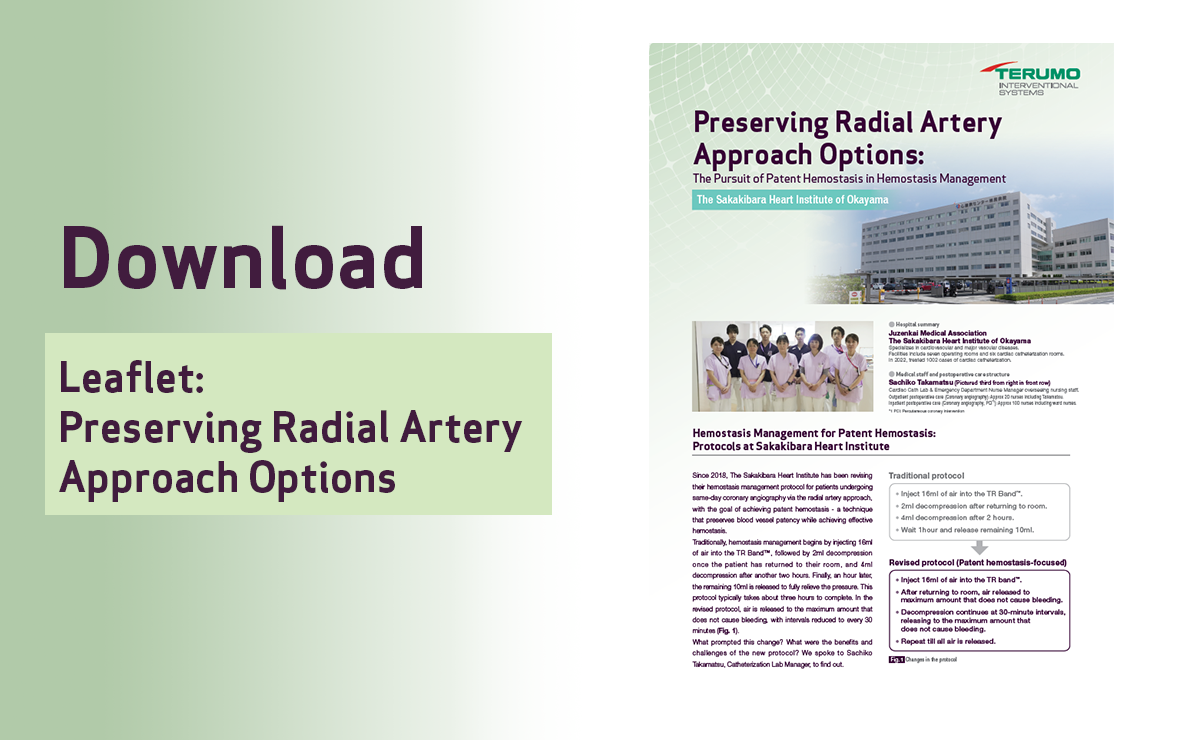Hemostasis Methods for Radial Access
How to TRY TRI

RAO (Radial Artery Occlusion)
RAO is the most frequent post-procedural complication of TRA, restricting the use of the same radial artery for future procedures and as a conduit for coronary artery bypass graft.

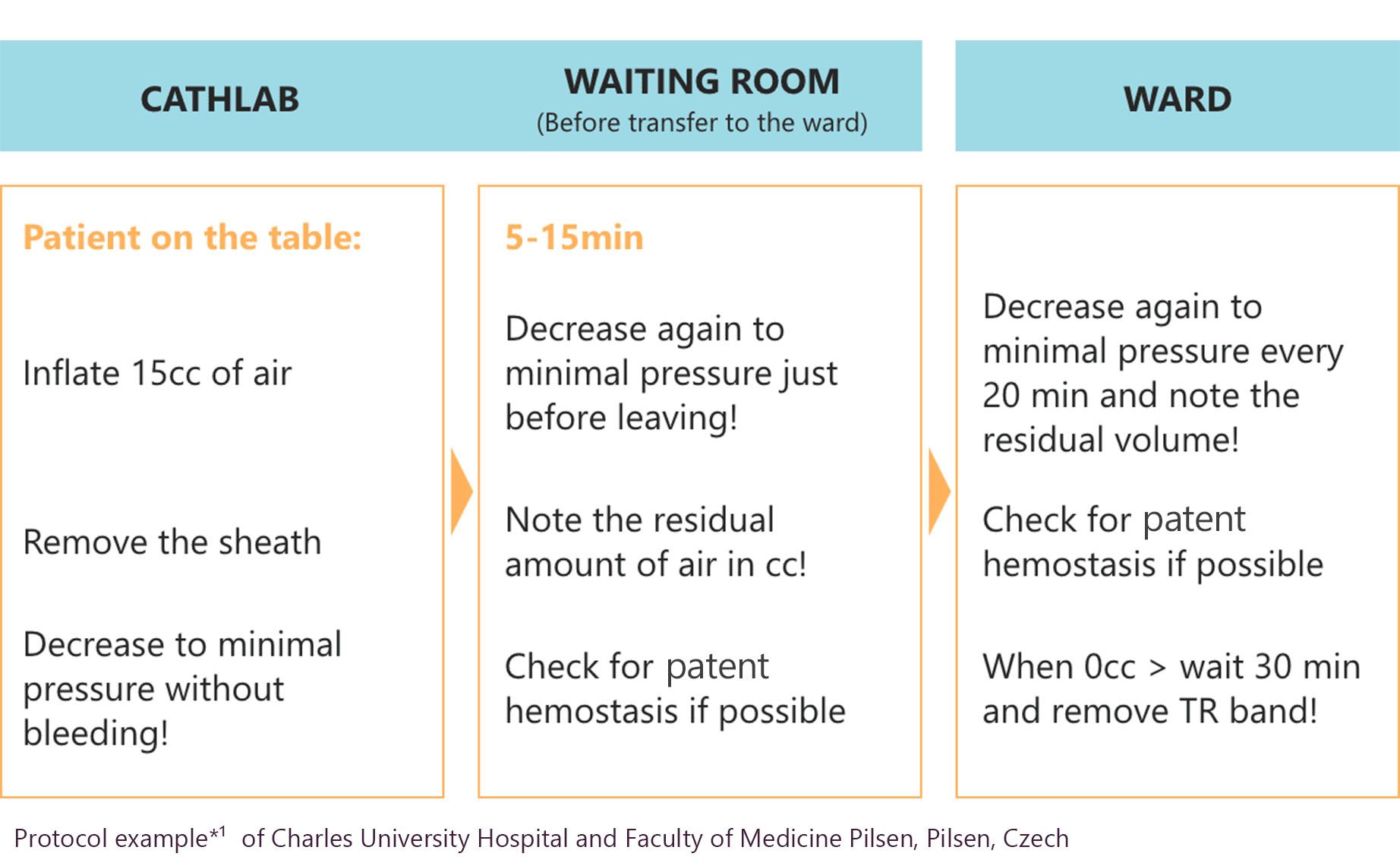
TR Band™ application and removal guidelines video by Dr. Martinelli
TR Band™ application and removal guidelines video
RACOMAP trial
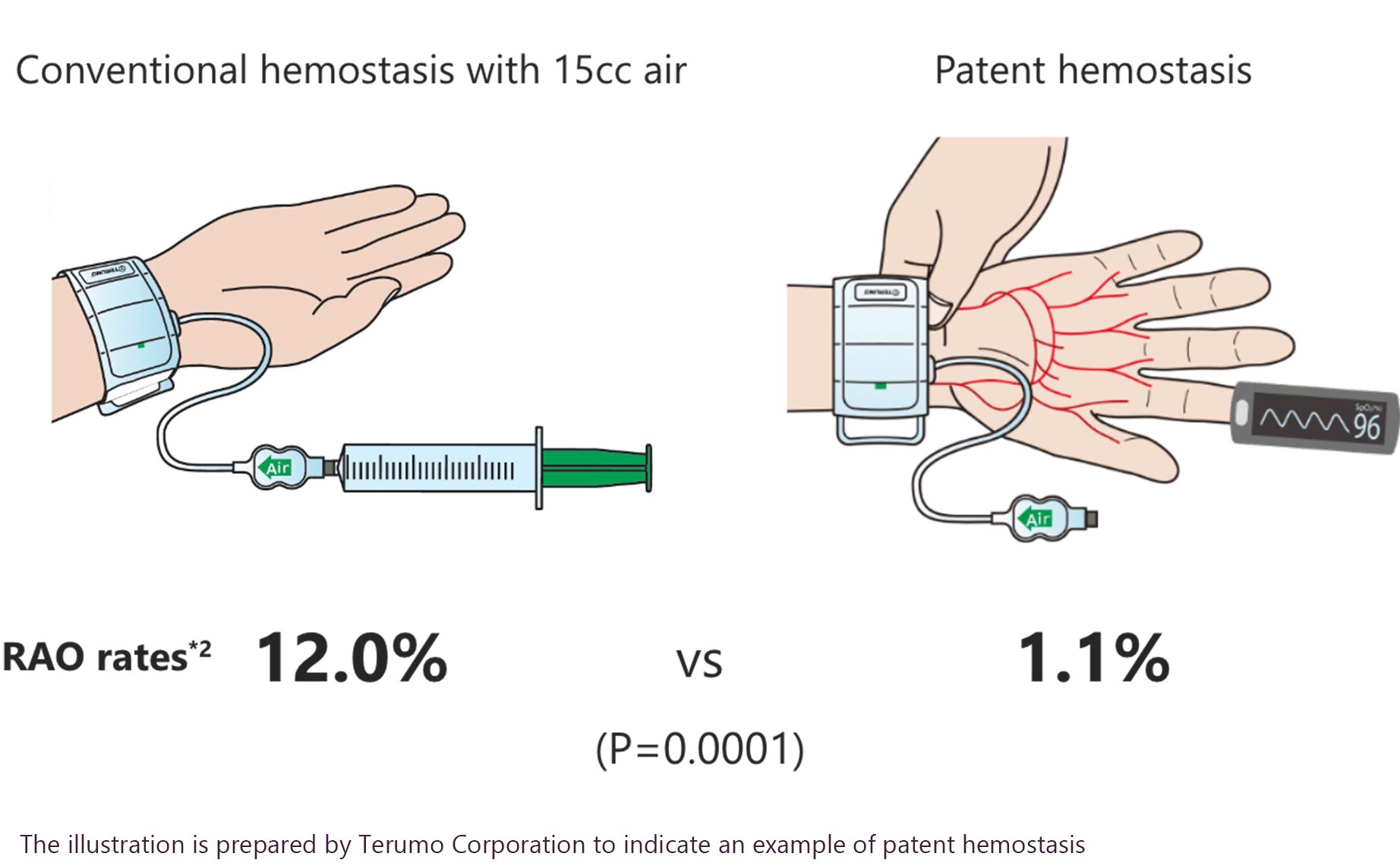
Hemostasis Management for Patent Hemostasis: Protocols at Sakakibara Heart Institute
Sachiko Takamatsu
Cardiac Cath Lab & Emergency Department Nurse Manager
Since 2018, The Sakakibara Heart Institute has been revising their hemostasis management protocol for patients undergoing same-day coronary angiography via the radial artery approach, with the goal of achieving patent hemostasis - a technique that preserves blood vessel patency while achieving effective hemostasis.
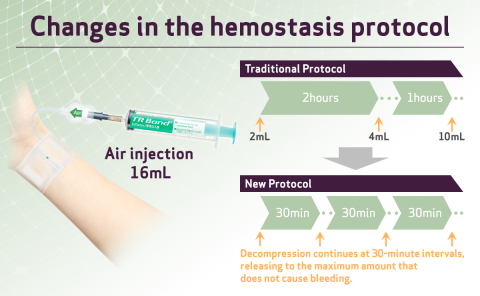
What prompted the changes to the hemostasis management protocol?
- The revision was prompted in part by a diabetes specialist, who commented that they had difficulty detecting a pulse during examinations of CAG outpatients with a history of coronary angiography, and suggested checking for radial artery occlusion (RAO).
- It was concerned that the traditional Hemostasis protocol took too long.
The goal was to enhance nursing efficiency and more effectively use our human resources more effectively.
What were the benefits of the change to a new hemostasis protocol?
The rate of RAO decreased, and hemostasis time was reduced.
A patent hemostasis-focused protocol, where decompression occurs sooner, was well-received by the patients.
The shorter hemostasis time positively impacted work efficiency and mental health.
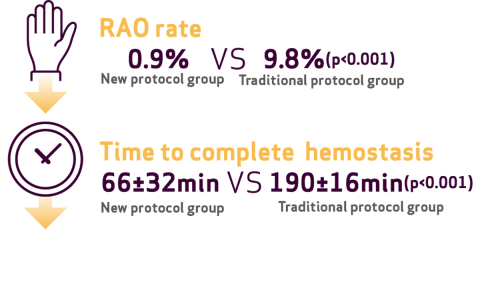
Key points to be followed
- The slow release of pressure.
- Confirmation that bleeding has stopped after decompression.
- Developing a strategy for handling bleeding that occurs after decompression.
Preserving Radial Artery Approach Options
Since 2018, The Sakakibara Heart Institute has been revising their hemostasis management protocol for patients undergoing same-day coronary angiography via the radial artery approach, with the goal of achieving patent hemostasis - a technique that preserves blood vessel patency while achieving effective hemostasis. As clinical benefits, the rate of RAO was decreased, and hemostasis time was reduced.
